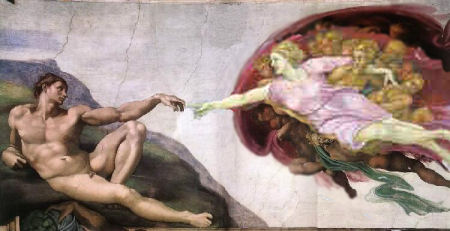
A gay Catholic priest in the Philippines marched at Pride this year, and recently shared his story about being gay, being ordained, and being faithful.
Fr. RJ, a pseudonym, marched in Manila’s LGBT Pride Parade earlier this year, reported Rappler. Joined by family and friends, the priest told those celebrating:
” ‘I am gay. . .Homosexuality it is not an issue anymore within the Catholic clergy. . .Why should I be ashamed? My sexual preference never hindered my mission as a Catholic priest.
” ‘Since the day I understood my real identity and fully embraced my sexuality, I also got to understand how to serve God with everything I have, without pretending to be someone I am not.’ “
Ordained four years ago, Fr. RJ knew he was gay in adolescence, but, at the time, this knowledge was worrisome and confusing. The priest’s family was conservative, and the Philippines is a very traditionally Catholic nation. For several years, he kept quiet about being gay and focused on his studies. Then, he fell in love at college. Rappler reported his description of the experience:
” ‘I fell in love with a man who taught me how to accept my true identity,’ RJ said.
“RJ was swept into a year of ‘firsts.’ His first bouquet of roses, first time to hold hands while walking, first time to hear and get notes with ‘sweet nothings,’ his first kiss, and his first gay sexual encounter.
” ‘Our days were among the happiest moments of my life. I felt I belonged and recognized. I was freer; I didn’t have to hide my fears. I was me whenever I was with him.’ “
That relationship eventually ended, but Fr. RJ said he learned to “accept my true self and sexuality” through the experience. And soon after, he realized the call to priestly life. Rappler’s report continued:
“The priest remembered how he prayed that pain and hatred leave his heart. The scars of his first agony were still there. . .Staring at the Paschal candle as it flickered in the cold afternoon breeze, the priest began to realize that his first love was not the man who broke his heart. It was Christ.”
Fr. RJ would begin formation a year later, and he has been in religious life since then, saying he has “never felt different or discriminated.” He commented:
” ‘I don’t know if they are aware that I am gay, but I believe, even if they do, they will not judge me. . .homosexuality is common within the organization of the priests.’
” ‘We crack jokes about it. We talk serious matters concerning sexuality and there are a lot of priests who are vocal they are homosexuals. . .[while others hide] inside the closet because of fear or confusion or guilt.”
Fr. RJ’s story has helped initiate a conversation about gay priests, and LGBT rights more broadly, in the Philippines. Professor Jayeel Serrano Cornelio of Ateneo de Manila University, a Catholic school where he directs the Development Studies Program, said “a priest who is gay is not unusual” and further:
” ‘For me, the bigger issue is whether many other Catholics still find it problematic. There are so many young people now who do not find it a problem at all. And maybe they are ‘freer’ because they are not priests. . .[the church should send] a stronger message of compassion and inclusion.’ “
Obstacles for gay priests remain, as the church has offered mixed messages about homosexuality and the priesthood. The Rappler news article quoted Fr. Eduardo Apungan of the Association of Major Religious Superiors in the Philippines as saying openly gay men should not be admitted to the priesthood, but if a priest comes out as gay after being ordained, he should not be condemned. This stance was backed by Bishop Broderick Pabillo, auxiliary of Manila, an archdiocese led by the pastorally-oriented Cardinal Luis Antonio Tagle.
Pope Francis, himself, has weighed in about gay priests, which were the object of his famous “Who am I to judge?” comment that he has since expanded to include all LGB people. Recent gay controversies at Ireland’s national seminary and resigned Archbishop John Neinstedt reveal the issue of gay men and the priesthood is far from settled, to the detriment of gay priests and the People of God they faithful serve alike.
But Fr. RJ is contributing what he can to promote inclusion of LGBT people in the church. Last year, he wrote about baptizing the child of a same-gender couple and challenged Filipino bishops on their anti-marriage equality stand which Fr. RJ said was “wrong and hurtful and a far cry from the Gospel.” Bearing witness by sharing his story of coming out and coming to religious life is another step in that work.
–Bob Shine, New Ways Ministry








